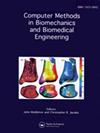基于粒子群优化的心电心律失常自动分类深度神经网络。
IF 1.7
4区 医学
Q3 COMPUTER SCIENCE, INTERDISCIPLINARY APPLICATIONS
Computer Methods in Biomechanics and Biomedical Engineering
Pub Date : 2025-05-08
DOI:10.1080/10255842.2025.2501635
引用次数: 0
摘要
提出了一种基于粒子群算法的深度神经网络超参数自动整定的心电分类系统。PSO优化了五个关键参数:两个完全连接层的神经元计数,辍学率,学习率和优化器选择。心电信号经过小波分解进行特征提取,并在MIT-BIH心律失常数据库中进行五类心跳分类。优化后的PSO模型达到了99.76%的准确率、99.34%的精密度和99.21%的F1分数,显示了PSO在提高模型可靠性的同时减少了人工工作量的有效性。本文章由计算机程序翻译,如有差异,请以英文原文为准。
A new particle swarm optimization-enhanced deep neural network for automatic ECG arrhythmias classification.
This study proposes an ECG classification system using particle swarm optimization (PSO) for automated deep neural network hyperparameter tuning. PSO optimizes five key parameters: neuron counts in two fully connected layers, dropout rate, learning rate, and optimizer selection. ECG signals undergo wavelet decomposition for feature extraction, with classification performed on the MIT-BIH Arrhythmia Database across five heartbeat classes. The PSO-optimized model achieves superior performance with 99.76% accuracy, 99.34% precision, and 99.21% F1 score, demonstrating PSO's effectiveness in improving model reliability while reducing manual effort.
求助全文
通过发布文献求助,成功后即可免费获取论文全文。
去求助
来源期刊
CiteScore
4.10
自引率
6.20%
发文量
179
审稿时长
4-8 weeks
期刊介绍:
The primary aims of Computer Methods in Biomechanics and Biomedical Engineering are to provide a means of communicating the advances being made in the areas of biomechanics and biomedical engineering and to stimulate interest in the continually emerging computer based technologies which are being applied in these multidisciplinary subjects. Computer Methods in Biomechanics and Biomedical Engineering will also provide a focus for the importance of integrating the disciplines of engineering with medical technology and clinical expertise. Such integration will have a major impact on health care in the future.

 求助内容:
求助内容: 应助结果提醒方式:
应助结果提醒方式:


